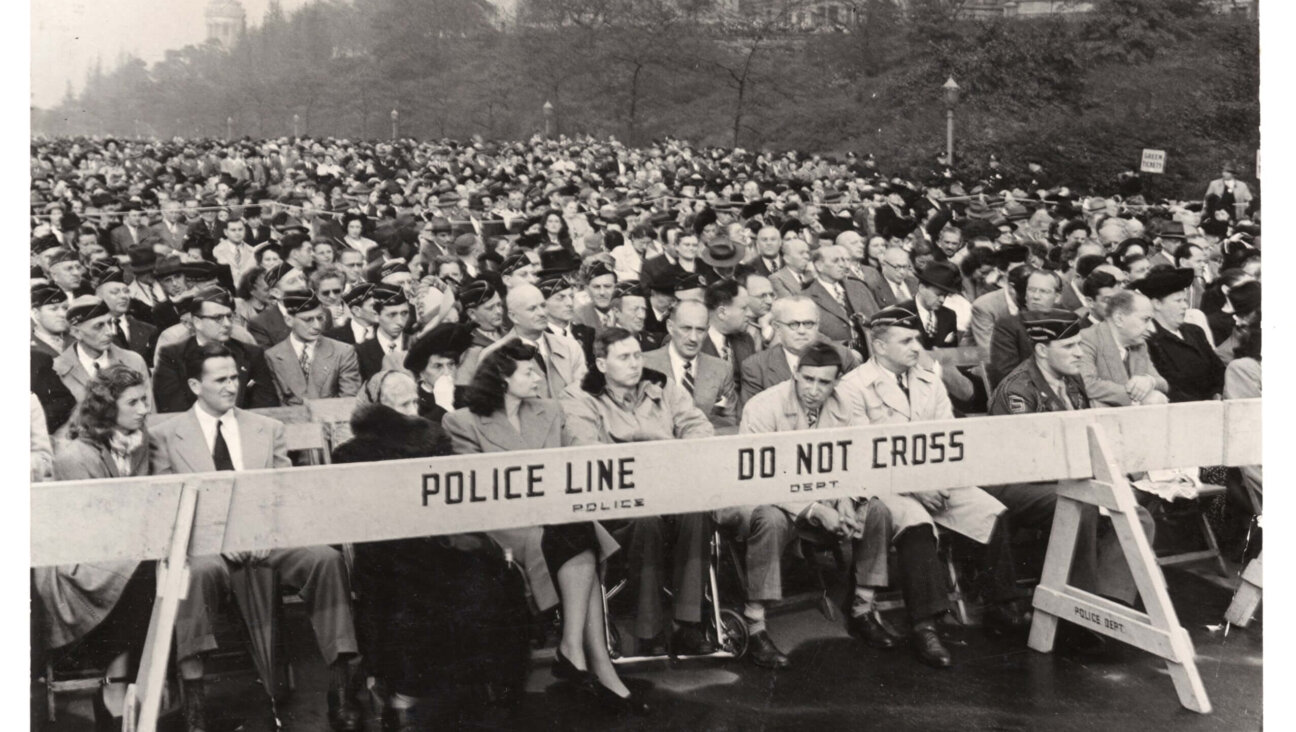Deconstructing Bashevis
Addicts, everyone knows, are difficult to satisfy: They don’t want more of the same, but they are ready to test limits, to be exigent in their rewards. Since the first moment I encountered the work of Isaac Bashevis Singer — in Spanish translations in the 1970s — I have been a confessed addict. He struck me as possessed of an enviable quality — the talent to make beauty out of vanishing memories — and he was prolific enough to keep my addiction satisfied. Singer produced an embarrassment of riches; his “Collected Stories” alone, published in 1982, is an unparalleled achievement. But as is to be expected from someone who left us dozens of novels, hundreds of stories and several autobiographical volumes, certain samples are also derivative, second rate, even rushed. Still, my addiction remained sustained, and dangerous: I read everything by and about Singer that I could find.
In early 2001, I gave a lecture on him at The Mercantile Library of New York. After the event, Max Rudin, publisher of The Library of America, gave me an inviting proposition: Would I be interested in editing a three-volume set of Singer’s collected stories? It was to be accompanied by what became known as the “Album,” a photographic tribute to Singer’s work, with appreciations by other writers. A Mexican shmendrik like me didn’t think twice. With the support and encouragement of Robert Lescher, Singer’s agent, I began my research.
I never meant to embark on a full-fledged biography but, in retrospect, I accumulated enough information to produce a massive one. I went beyond Singer’s visible legacy and focused my attention on his archives. It is known that Singer, who had been suffering increasing from senile dementia, spent the days before his death — at the age of 87, on July 24, 1991 — in his apartment in Surfside, Fla., in a state of obfuscation, even paranoia. Alma, his wife, remained loyal until the end, and eventually a reunion occurred with the estranged children from her first marriage, from whom Singer had kept her away. Eager to give away Singer’s papers, Alma entertained a number of offers, finally settling on the Ransom Center in Austin, Texas. Through several phone conversations, I found out that Singer paraphernalia could be found at, among other places, Florida Atlantic University, Miami Dade Community College, YIVO and the archives of the Jewish Daily Forward. But the majority of the material was at the Harry Ransom Humanities Research Center of the University of Texas at Austin.
In January 2003, I set out for Texas, in search of Singer’s last word.
What I found were 60-plus boxes of Singer material that had been patiently catalogued for more than a decade by capable archivists. I couldn’t have been more excited. Here were photographs, clippings, correspondence, passports, manuscripts, proofs, diplomas, checks, editions in multiple languages, etc., from an author I loved and admired. I found little about
Leoncin, the shtetl in which he was born, but I did come across Singer’s Carte de Presse from 1935, from the time when he worked for La Journée Parisienne. I found his 1930 Yiddish translation of Erich Maria Remarque’s “Oyfn mayrev-front keyn nayes,” or “All Quiet in the Western Front.” I saw photographs with his siblings Esther Kreitman and Israel Joshua Singer; his friend Aaron Zeitlin and acquaintances like Katya Molodovsky and Yosef Opatoshu; his Farrar, Straus and Giroux editor, Roger Straus, who died last month and whose wife, Dorothea, wrote a 1982 memoir of Singer called “Under the Canopy.” And I came across the New York Times article about the now-corrected error in Singer’s tombstone at the Beth-El Cemetery in Paramus, N.J. It originally stated: “Noble Laureate.”
Noble? It wouldn’t have been my first choice of adjectives. As I delved further into the boxes, I began to feel the steady assault of idol-shattering. It first came in the form of epistolary evidence of plentiful romantic nights spent with mysterious women who swear their love to Singer and offer their help in translating his stories. He gladly takes their offer… and then communication ends. There were letters to and from the Jewish Daily Forward, whose famous editor-in-chief, Abraham Cahan, had little esteem for Singer’s florid imagination. And correspondence from Rachel MacKenzie of The New Yorker, evidencing efforts of Singer’s editors to shape his stories for an English-language audience.
Perhaps most painfully, I found a picture dated March 14, 1936, of his first wife, Runia Shapira, and their son, Israel. Runia had been denounced as a Zionist by the Soviets, spent nine months in Turkey and finally settled in Israel with her son (who later hebraicized his surname to Zamir, Hebrew for “singer.”) I found an aerogramme from a 20-something Israel Zamir to his father, who by then had fostered a complicated relationship based on silences and evasions.
I don’t want to go into detail about each of the revelations I came across. Some are in the “Album”; I’ve spoken to friends about others, and a few more I better keep to myself. I do need to confess that my discomfort swelled as my research advanced: My adolescent idol, I realized, was also habitually abusive. I learned to see Singer in a different light: resentful, petulant, self-aggrandizing and, what to me is an unforgivable sin, incapable of supporting the next generation of writers. At one point, I contemplated calling up Max Rudin and closing the door on the whole endeavor.
“Yes — writing lives is the devil,” Virginia Woolf once said. I added: We hold our heroes closest to our heart after we come to recognize their limitations. If delving into a person’s secret diaries is indiscreet, scrutinizing his tax receipts is utterly embarrassing. But Singer, aware of his own immortality, stored these items for the future to have — and, I thought, I guess I’m his future.
Still, I couldn’t help but be mystified that Isaac Bashevis Singer, unquestionably a promising young Yiddish author but not one on whom those in-the-know before World War II would have bet, today enjoys the uncontested status of zeyde for American Jews. He is recognized as a bridge between the Old World and the New, as well as the torch bearer of a past incinerated at Auschwitz. But Singer left Europe in 1935 at the age of 31, and while the Holocaust indeed appears in his fiction, it does so only marginally. Moreover, he was no Mr. Lower East Side: The neighborhood of Eldridge Street and its surroundings was never his home. He spent time at the Garden Cafeteria, especially when photographer Bruce Davidson took him back to it for a photo shoot that in 1973 made its way to New York magazine, and the Folksbiene Yiddish Theatre dramatized eight episodes from “In My Father’s Court.” But his loci were Coney Island and the Upper West Side — Singer’s apartment was at the Belnord Building on 86th Street, between Broadway and Amsterdam, known now as “Isaac Bashevis Singer Boulevard.”
Then there is the mythology of Singer as the keeper-of-the-flame, the man single-handedly responsible for the endurance of Yiddish into the age of globalization. That, too, is a fallacy. The Nobel committee honored him, in the words of Lars Gyllensten, a committee member, for his effort toward Yiddish. It is “the language of the simple people and of the mothers, with its sources far back in the Middle Ages and with an influx from several different cultures with which this people had come in contact during the many centuries they had been scattered abroad.” Gyllensten added: This “is Singer’s language. And it is a storehouse which has gathered fairytales and anecdotes, wisdom, superstitions and memories for hundreds of years past through a history that seems to have left nothing untried in the way of adventures and afflictions.”
In his acceptance speech, Singer replied that “there are some who call Yiddish a dead language, but so was Hebrew called for 2,000 years. It has been revived in our time in a most remarkable, almost miraculous way. Aramaic was certainly a dead language for centuries but then it brought to light the Zohar, a work of mysticism of sublime value. It is a fact that the classics of Yiddish literature are also the classics of the modern Hebrew literature. Yiddish has not yet said its last word.”
A sanguine statement: Yiddish has not yet said its last word. If people feel nostalgic toward Singer’s Yiddish, this is mainly because Singer knew perfectly how to capitalize on nostalgia. More than one of Singer’s many Yiddish colleagues accused him of betraying his literary tradition when he decided to translate out of Yiddish. (His enemies, so the joke goes, regularly would wake up an hour earlier than usual so that they could have more time to hate Singer.) And in all truth, the reputation he amassed in his mature years is thanks to English.
Over the past year, I’ve fallen in love with Singer again. I realize now that what I most love about him are his contradictions. These contradictions are for everyone to ponder. Browsing through a treasure trove of critical rejoinders to his oeuvre, I’ve come across more than a share of hostile, even derogatory comments, including some by Robert Alter and Leon Wieseltier. He is called “a charlatan,” a prankster, a “traitor to the Yiddish tradition,” even “a dirty old man” whose fiction is “bad for the Jews.” But there is also a plethora of accolades — from Irving Howe, Leslie Fiedler and Ted Hughes, among others, who applauded Singer’s talents at different moments throughout his almost-40-year career in English. For them, he was a mythical genius and “the best writer in the United States since World War II.” How did this fabulist extraordinaire, and the only Nobel Prize winner Yiddish might ever have, metamorphose from a shmendrik born at the dawn of the 20th century into an orthodox milieu of the Polish countryside into an iconic American master whose work stands side by side with that of Nathaniel Hawthorne, Stephen Crane and Dawn Powell? Perhaps he himself was the magician of Leoncin.
This year marks Singer’s centennial. Numerous events sponsored by the National Endowment for the Humanities are planned countrywide, which should allow for plenty of opportunity to discuss these contradictions. A traveling exhibit of Singer memorabilia organized by the Ransom Center will be on display in Massachusetts, New York and Florida, and a smaller-scale version of Bruce Davidson’s photographs of Singer will open at the Mead Museum of Amherst College on September 7, accompanied by a lavish catalog. A five-day conference at the National Yiddish Book Center, from July 11 to 15, will celebrate his birthday with fanfare. A show of illustrations by Margot Zemach of Singer’s children stories is scheduled at the Eric Carle Museum in Amherst. Dramatizations of the novels “The Slave” and “Shosha” by the Israeli troupe Gesher Theater will open at the Lincoln Center Festival in July. Symposia, gala parties, lectures and film retrospectives will take place. And, with the assistance of the American Library Association, 60 local public libraries nationwide will sponsor events and discussions on Singer.
The feast should enable us to be part of a national conversation not only on Singer’s durability, but also about the position of Jewish literature as a whole in America. As expected, this conversation starts in these very pages, for, in spite of his on-and-off relationship with its editorial staff, Der Forverts built Singer’s audience. This special supplement of the Forward includes “Two,” a powerful, never-before-seen story by Singer that I found in the Ransom Center. It also showcases an essay by Dara Horn on the Singer siblings and the notion of creativity in families (along with an excerpt from “Deborah,” the novel by Singer’s sister, which was translated by her son, the late literary critic Maurice Carr, and will be reissued in July by The Feminist Press). The reader will also find a piece on demonology by Esther Schor and a first-person essay by Jeff Sharlet in defense of Singer’s amorality. For the “Album,” I asked a handful of authors — Jonathan Safran Foer, Francine Prose and Joyce Carol Oates, among them — to offer micro-appreciations. Judy Budnitz goes beyond: She maps her attempts, as a writer, to locate Singer’s “magic.”
The essays in this section ask important questions, including one compelling to me: If Singer is only the second non-English speaker to be included in the American literary canon safeguarded by The Library of America — the only other one is Vladimir Nabokov — does his inclusion confirm that he no longer belongs in the Yiddish pantheon?
The response they seem to come up with is no: As complicated a figure as Singer might be, in the end he is, like the majority of us, a hyphenated figure — a bit Polish, abundantly American and inescapably Jewish. And he is also a classic, able to transcend, through his florid, hypnotizing fiction, the confines of his own environment.

I hope you appreciated this article. Before you go, I’d like to ask you to please support the Forward’s award-winning journalism this Passover.
In this age of misinformation, our work is needed like never before. We report on the news that matters most to American Jews, driven by truth, not ideology.
At a time when newsrooms are closing or cutting back, the Forward has removed its paywall. That means for the first time in our 126-year history, Forward journalism is free to everyone, everywhere. With an ongoing war, rising antisemitism, and a flood of disinformation that may affect the upcoming election, we believe that free and open access to Jewish journalism is imperative.
Readers like you make it all possible. Right now, we’re in the middle of our Passover Pledge Drive and we need 500 people to step up and make a gift to sustain our trustworthy, independent journalism.
Make a gift of any size and become a Forward member today. You’ll support our mission to tell the American Jewish story fully and fairly.
— Rachel Fishman Feddersen, Publisher and CEO
Join our mission to tell the Jewish story fully and fairly.
Our Goal: 500 gifts during our Passover Pledge Drive!
























